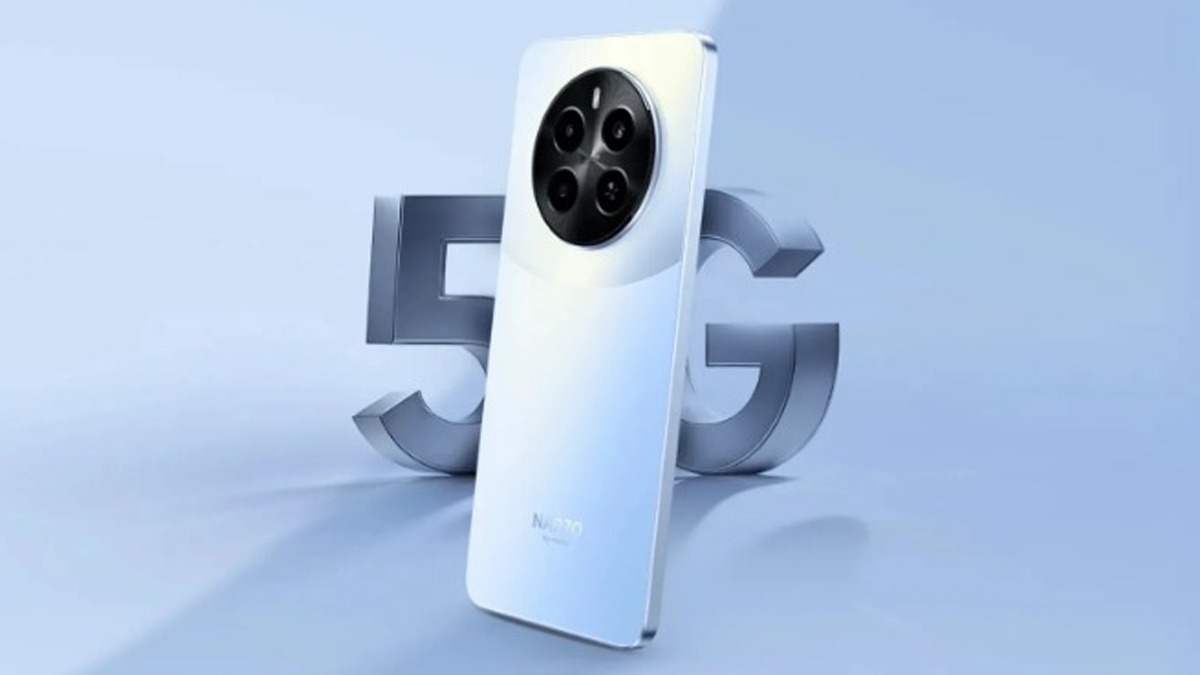Just In
- 3 hrs ago

- 4 hrs ago

- 4 hrs ago

- 6 hrs ago

Don't Miss
- Movies
 After Dalljiet Kaur-Nikhil Patel, Kundali Bhagya Star To DIVORCE Actress-Wife After 2 Yrs Of Marriage? DEETS
After Dalljiet Kaur-Nikhil Patel, Kundali Bhagya Star To DIVORCE Actress-Wife After 2 Yrs Of Marriage? DEETS - News
 Delhi Police Joins 'Look Between Your Keyboard' Trend, Gives Witty Driving Warning
Delhi Police Joins 'Look Between Your Keyboard' Trend, Gives Witty Driving Warning - Lifestyle
 Backless Dress: 7 Tips For Choosing Perfect Bra For Backless Outfits And Turn Heads Wherever You Go
Backless Dress: 7 Tips For Choosing Perfect Bra For Backless Outfits And Turn Heads Wherever You Go - Sports
 DC vs GT IPL 2024: Why Shubman Gill Held Back Spinner R Sai Kishore Till 19th over?
DC vs GT IPL 2024: Why Shubman Gill Held Back Spinner R Sai Kishore Till 19th over? - Travel
 Escape to Kalimpong, Gangtok, and Darjeeling with IRCTC's Tour Package; Check Itinerary
Escape to Kalimpong, Gangtok, and Darjeeling with IRCTC's Tour Package; Check Itinerary - Finance
 DCB Bank Q4 Results: PAT Grew 9% To Rs 156 Cr, NII Jumps 4.5%; Dividend Declared
DCB Bank Q4 Results: PAT Grew 9% To Rs 156 Cr, NII Jumps 4.5%; Dividend Declared - Education
 MP Board Class 10th, 12th Results 2024, Know Alternative Ways to Check Your Result
MP Board Class 10th, 12th Results 2024, Know Alternative Ways to Check Your Result - Automobiles
 Aston Martin Vantage Launched In India At Rs 3.99 Crore
Aston Martin Vantage Launched In India At Rs 3.99 Crore
Large screen smartphone! Is it the right size?
Do you really need large screen smartphones?
Smartphones have advanced in several aspects and display size is one such segment. Earlier, smartphones had small 3.5-inch to 4-inch displays. Gradually, the screen size started increasing resulting in a category of devices termed phablets. Now, there are two common screen size categories - one is 4.7-inch to 5.2-inch and the other one is above 5.5-inch that is phablets.

With every passing year, smartphone makers are coming up with bigger phones. Have no doubts, consumers are lining up to grab their hands on such big phones. In some cases like Apple, companies are launching different flagship models with varying screen sizes at the same time. In that case, you might get confused if you need to go with the big or bigger variant.
Well, we are here to shed some light on the large display phones. We will tell you the pros and cons of having bigger display smartphones and what factors you need to consider before choosing the ideal screen size for your usage. Take a look!

You'll get to see more information
The increased screen real estate means that you get to see more information such as more content on the web pages while you are browsing and more tweets on a single scroll. Also, the photos, videos, and games will look better on the larger screen. On Android based devices, you can use the split-screen feature that lets you view and use two apps side-by-side.

What do you actually get?
Bigger screen size translates to a bigger body. A big phone can house a more capacious battery. If you have observed some battery tests online, you can find that big screen Android phones have scored high in terms of battery life (there's more to talk about battery life). Also, it is faster to type on such phones with two thumbs. But the issue with such a phone is that you can't fit it in your pocket comfortably.
Also Read: Smartphone Displays Explained: OLED vs LCD vs AMOLED

One-handed usage is still possible
While it is tough to use the large screen phones in one hand, there is a comfortable feature in both Android and iOs that lets you adjust the screen for one-handed usage. On enabling this feature, the screen can be used in one hand comfortably and you also get a keyboard for one-handed typing.

Power consumption will be high
Big screens will consume more power than the small screens. Eventually, the bigger battery used in such large screen phones will end up suppling more power to the display. The type of screen that the phone uses also plays a major role over here. The AMOLED panels consume less battery power in comparison to the TFT displays that result in battery drain. Even the IPS LCD panels are power hungry.
Imagine you have a big screen phone with an IPS LCD panel. Apparently, you will be spending a lot of time on charging the device frequently as the battery power will be consumed to a great extent by the screen for its huge size as well as the type of panel that it uses.

Decide the ideal screen size
Usually, screen size is not a major factor that you will affect your buying decision. But, there is a way to find out the right screen size (eventually, phone size as well). Measure the length of your hand starting from your palm's base to the top of your little finger. You should choose a phone with a length smaller than this measure to make sure you use it comfortably.
An even simpler method is to try out models of varying screen sizes at a local store. If your hand is strained while holding a phone, it's big for you.
-
99,999
-
1,29,999
-
69,999
-
41,999
-
64,999
-
99,999
-
29,999
-
63,999
-
39,999
-
1,56,900
-
79,900
-
1,39,900
-
1,29,900
-
65,900
-
1,56,900
-
1,30,990
-
76,990
-
16,499
-
30,700
-
12,999
-
11,999
-
16,026
-
14,248
-
14,466
-
26,634
-
18,800
-
62,425
-
1,15,909
-
93,635
-
75,804












































